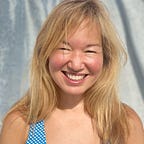Fierce assimilation
I attended a symposium last week at the Center for Hellenic Studies to explore “Disconnectedness and the Integrating Leader.” One of the things we discussed was the critical importance of surrounding yourself with diversity. Racial. Socioeconomic. Ideological. As has become evident with this election, most of us exist within our own echo chambers and we infrequently, if ever, interact with anyone outside of our silo. We post on social media for people who already agree with us. We socialize with people who conceptually and actually look like us. This interpersonal isolationism has been a significant contributing factor to the current political fiasco.
Over the past months, I have attempted to understand viewpoints that are different from my own. I have tried reading books and articles that attempt to explain the Trump phenomena. I have tried reading and listening to commentators that Trump supporters follow. Mostly it makes me angry. But I feel empathy, too. I have understood throughout my life that feeling of disconnectedness, of being left out of the power that is inherent in certain elite circles. This struggle to understand others has been a powerful tool for understanding myself.
My first memory of feeling like an outsider was when I lived in a small town in the Alaskan interior when I was 7-years-old. I looked like a Native girl and Natives were treated as inferiors by the dominant white culture of the town. It didn’t matter if I corrected people and told them I was half-Asian, my physical features placed me in the “other” category that was the only option for people like me on surveys and standardized questionnaires. I never saw any children of any actual color in my school. Native peoples in Alaska lived apart from whites so I was treated as an interloper.
In the third grade, I began the process of stubborn assimilation into white culture when I moved from the Alaskan wilderness to a suburban neighborhood of Richmond, Virginia, also in which no children of color lived. A small contingent of black kids later enrolled at my high school, which was fed by a few slightly more diverse primary schools from around the area. Self-imposed segregation was in full effect though. The black students sat together at lunch and congregated on the back patio with the smokers during breaks between classes. I socialized with only white kids throughout those years, even avoiding the one other Asian girl in my class, who also avoided me. The first rule of assimilation: never associate with another Asian. Ever.
I continued to avoid having friends of color throughout college. I rejected the Student Asian Association though an acquaintance tried to recruit me. Instead I joined the Scandinavian Interest Club after accompanying my Finnish roommate to all the Nordic activities. My friends sunburned easily and ate bland foods. I eventually married almost the whitest guy I could find in our predominantly white southern school, which completed my assimilation.
In law school, I drank beer every Wednesday night at the Tap House with my bro white friends. We played Hearts instead of studying every afternoon in the library. I kept up with their trash talk and delighted in the acceptance that their laughter conveyed. I felt like I was one of the boys. One of the white boys, to be exact. But it was an illusion.
